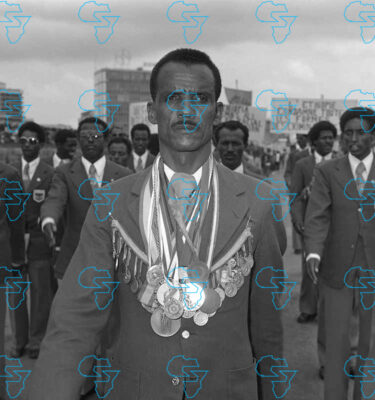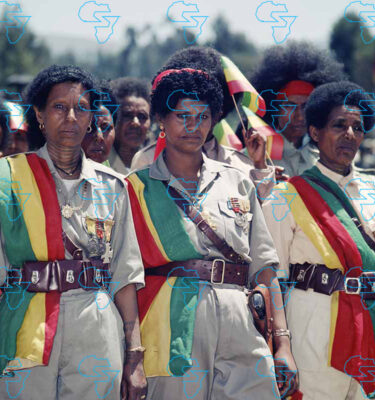
Over the last four decades, successive Ethiopian governments have placed the manufacturing sector at the heart of ambitions to see the country leave behind its near-total dependence on agriculture. The textiles and apparel industry, in particular, was time and again held up as the core driver of the transformation.
During the EPRDF era, the second and third Growth and Transformation Plans envisioned the sector bringing in up to USD 25 billion in annual revenues by 2025. Today, textile factories, much like other manufacturers across the country, find their operations crippled by foreign currency shortages, infrastructure issues, security problems, and bureaucratic hurdles.
Although initiatives such as the Homegrown Economic Reform or the Ethiopia Tamrit campaign launched by the administration of Prime Minister Abiy Ahmed (PhD) over the last seven years have led to a purported expansion in production capacity, the efforts have not been enough to realize the vision of a manufacturing-led economy.
– Advertisement –
Despite the shortcomings, Fitsum Assefa, minister of Planning and Development, told the audience at a high-level business forum organized at the Ethiopian Skylight Hotel last week that the government’s initiatives have revived underperforming factories and boosted capacity utilization across the sector.
The Minister attributed the growth to policy shifts, including the enactment of the Special Economic Zone (SEZ) proclamation, an import substitution strategy, and the ‘Made in Ethiopia’ initiative.
The claims were part of a presentation on investment opportunities in energy, healthcare, pharmaceuticals, ICT, and manufacturing.
Fitsum highlighted the potential for growth in agro-processing, EV assembly, construction materials, and chemicals, pointing out that Ethiopia ranks seventh globally in livestock population, enabling a vibrant leather and textile sector, with over 3,700 companies engaged in the business and vast amounts of land suited to growing cotton.
Her presentation was hardly the first to feature an outline of the government’s ambitious plans for the manufacturing sector. Over the last decade, the same ambitions led to the creation of costly industrial parks across the country, notably in Hawassa, Bole Lemi, Kombolcha, and Mekelle, as officials gambled on them to attract foreign investment and create thousands of jobs.
However, critics warn that despite these outward signs of progress, the sector’s contribution to Ethiopia’s GDP remains conspicuously underwhelming. Experts also note that the disconnect between capacity and actual output raises an uncomfortable question: Is Ethiopia’s textile sector growing in form but not in substance?
The country’s textile and apparel plants have certainly enjoyed growth over the last decade, but their revenue figures are far from the billions envisioned by policymakers.
According to the Ethiopian Investment Commission (EIC), textile export capacity exceeded USD 160 million in 2022, up from less than USD 60 million a decade prior.
But even this growth has seen hiccups over the last couple of years. In 2024, the Commission reported a significant decline in the export of commodities from industrial parks, with the total revenues of USD 115.2 million falling far short of official targets and the preceding year’s performance.
At the time, EIC attributed the drop to the country’s continued exclusion from the African Growth and Opportunity Act (AGOA).
The Commission had also reported handing out no less than 329 new investment licenses throughout the 2024 fiscal year, with the manufacturing sector accounting for the vast majority (246), followed by information technology and construction.
Industrial parks like Hawassa, operating under a zero-liquid discharge system, have for long been touted as environmentally conscious and globally competitive production hubs.
Yet, despite these investments, the manufacturing sector contributes less than five percent to national GDP, and the textile and apparel industry just a fraction of that figure.
Analysts argue that for a country with ambitions of industrial-led development, this is an underperformance. They point to limitations such as high dependency on imported raw materials, chronic foreign currency shortages, and periodic political instability that disrupts logistics and production cycles, to explain the troubles.
Experts argue that the disparity can be examined through key performance indicators used to evaluate the sector, including critical metrics in export revenue, employment creation, import substitution and backward linkage.
The Ministry of Industry sets an annual export revenue target of over USD 400 million for textiles and apparel. In practice, earnings have hovered between USD 140–160 million in the past three years—less than half of expectations. Much of this gap stems from productivity bottlenecks and global competitiveness challenges.
The challenges were highlighted in a report recently presented to Parliament by officers from the Industrial Parks Development Corporation (IPDC). They told lawmakers that firms operating within the parks under their purview managed exports of just USD 83 million over the first nine months of the financial year, representing only two-thirds of government targets.
Fisseha Yitagesu (PhD), CEO of the Corporation, blamed the shortfall on protracted conflict in parts of the country and the effects of Ethiopia’s suspension from AGOA.
He also revealed that investors have been leaving industrial parks in droves.
”Investment requires peace and stability, so the recent war in the north has posed challenges to the arrival of new investments, the continuation of existing ones, and the resumption of operations, not only in Mekelle but also in [other] parks in northern Ethiopia,” said Fisseha.
“We should remember that investment is not possible during a war,” the CEO told Parliament.
The investor exodus has affected industrial parks in Mekelle, Kombolcha, Bahir Dar, Semera, Bole Lemi and Debre Berhan. More than 50 investors left the 75-hectare Mekelle Industrial Park following the outbreak of war in late 2020.
Kamil Ibrahim, deputy CEO for Operations and Management at IPDC, said that efforts to contact investors who fled the country during the two-year northern war and convince them to return have not been successful.
”The companies have expressed their interest to leave the country and take their machines. We have provided them with an alternative suggesting they move to another part of the country. We are waiting for their responses,” he said.
However, Sosina Getahun, a member of the parliamentary committee overseeing state-owned enterprises, expressed her disapproval of attempts to move investors from one industrial park to another.
“If they do not want to stay, it would be better to ask investors what they lack in Mekelle Industrial Park and solve the problem, but to try to move them from one area to another is not right,” said the MP.
The parliamentary committee also raised concerns tied to declining employment rates in industrial parks and unaddressed grievances from employees.
IPDC reports that while there are more than 72,000 people currently employed at industrial parks across the country, more than 37,000 have quit their jobs at SEZs over the reporting period. Although the Corporation’s executives concede that low wages and issues related to raw material shortages have contributed to the problem, they say some of the employees were poached by other manufacturers outside of industrial parks.
Still, Kamil highlighted the lack of benefits offered to workers at industrial parks and asked the committee to enact a law setting a minimum wage.
Experts who spoke to The Reporter note the manufacturing sector is also facing challenges in capacity utilization, insufficient import substitution performance, and issues with backward linkage and foreign direct investment (FDI) attraction.
Analysts state that most textile factories operate below 60 percent capacity due to frequent power outages, raw material shortages, and inefficiencies in supply chains.
The misalignment of industries and resources was a key topic during the Ministry of Industry’s six-month report presentation in Parliament in January.
At the time, MPs accused Ministry officials of neglecting their duty to ensure access to raw materials for manufacturers, exemplified by the hoops many of them have to jump through to get their hands on inputs, while others are forced to turn to imports.
Parliamentarian Fetima Hadi (PhD) called on the officials to provide a full report detailing the level of alignment between the parks’ operation and the country’s long-standing manufacturing policies. He also demanded to see a detailed report on the number of jobs created and forex earned by industrial parks, as well as a presentation on their role in import substitution.
Melaku Alebel, minister of Industry, told lawmakers that determining where and on what kind of product an investor chooses to use its financing is not a task for the government.
International consultants have drawn up a nationwide resource map for use by regional administrations in guiding investors to areas where their endeavors would be most efficient, according to the Minister.
During the discussion, Melaku acknowledged the inefficiencies at industrial parks.
“There is a need to improve the efficiency of existing industrial parks and measure the response. We need to be able to measure how much return every cost will offer. As previously demonstrated; if we make industrial parks like those planted by politics, we will place the country in debt. Decisions are made with this in mind. Therefore, we will not build a new industrial park in the short term. We should make the existing ones effective,” Melaku said.
He stated that manufacturers residing within parks make up only a small share of total manufacturing export revenues.
“One of the biggest problems with it is that the backward integration is not properly planned. Most of the industries that we put in the parks were built in such a way that more than 90 percent of their raw materials are imported,” the Minister told lawmakers.
Meanwhile, in February 2025, the EIC was the subject of ire from lawmakers as members of the parliamentary Public Expenditure Administration and Control Committee grilled its leadership over a damning report from the federal auditors.
The Auditor General’s findings revealed that, over the last 25 years, the Commission has been busy revoking half of all the investment permits it had granted.
The report showed that more than 9,000 of the 18,600 investment permits issued by the Commission since the millennium began have been revoked.
During the February parliament hearing, Meseret Damtie, Auditor General, told MPs that her office’s audit discovered that no more than 24 percent of the 9,800 projects currently holding EIC permits are active.
“This is the issue that the Commission should place more focus on resolving. We need to know why exactly all these investors are flocking out, or why the Commission is revoking all these licenses. Unless we do, coming up with a solution will be difficult,” said Meseret.
Investment Commissioner Zeleke Temesgen (PhD) replied that permit revocations are a short-term solution, and attributed a lack of due diligence as the primary factor behind the premature exit of thousands of investments over the last 25 years.
According to him, EIC has conducted its own audits on the investors and companies that received permits prior to the current fiscal year, and said that no less than 45 of them have become operational over the last seven months.
However, the Auditor General stated it was unable to find any documents that support EIC’s claims of auditing 153 investors.
Meseret and her deputies also disclosed that only 31 percent of the 1,550 investment permits granted by the EIC since 2013 have ever gone operational.
Despite calls for improvement from industry stakeholders, Parliament, analysts and experts, the Ethiopian government continues to push the narrative of industrial transformation, with textile and garment manufacturing still at the heart of its export-led strategy.
Yet, some analysts argue that for all the new factory buildings and infrastructure, the sector’s inability to significantly impact GDP suggests deeper structural issues.
Critics also point out that policy execution, not vision, is the real bottleneck.
“We’ve had the right plans on paper—GTPs, the Homegrown Economic Reform Agenda, and now Ethiopia Tamrit,” says an industry insider who requested anonymity, “but institutional coordination, follow-up, and accountability are weak. That’s why growth is only visible in physical infrastructure, not in output or competitiveness.”
To reverse this trend, experts recommend a multi-pronged approach: strengthening backward linkages through investment in domestic cotton production, revising energy and logistics policies to ensure consistent inputs, and restoring investor confidence through political stability and international trade incentives.
Experts, analysts and industry insiders alike agree that unless Ethiopia addresses these systemic weaknesses, its textile ambitions may remain just that—ambitions.
The sector’s physical growth has already outpaced its economic contribution. Without careful course correction, Ethiopia risks weaving a story of missed opportunity—where the fabric of industrialization is rich in promise but poor in impact.
.
.
.
#Threadbare #Promises #Manufacturing #Sector #Struggles #Convert #Capacity #Contribution
Source link











